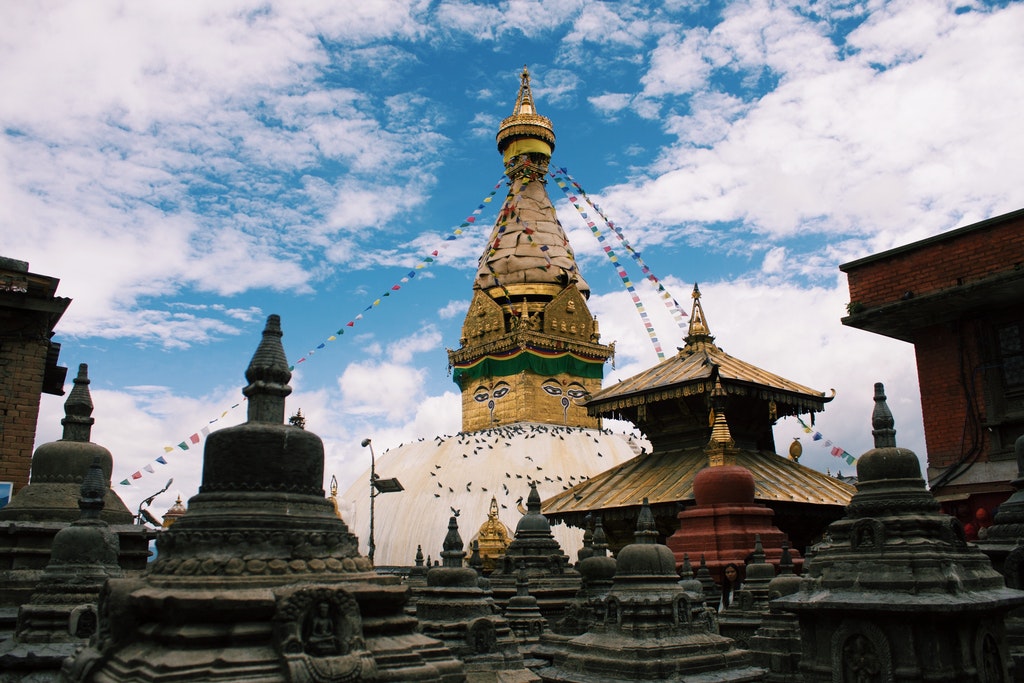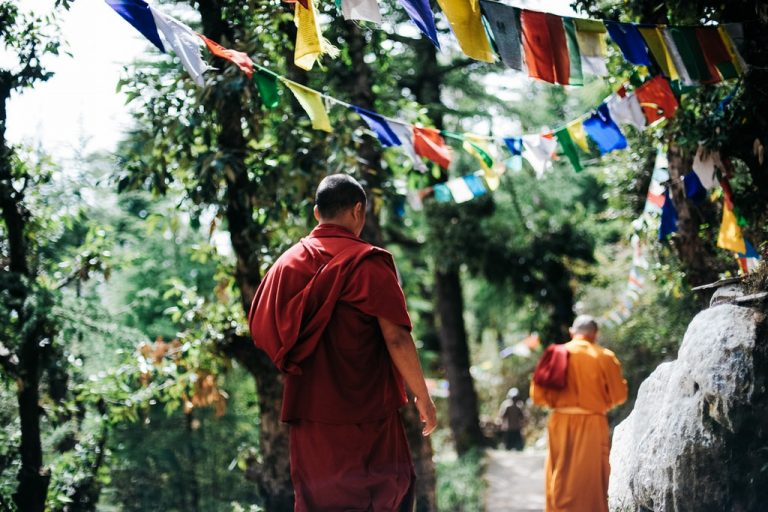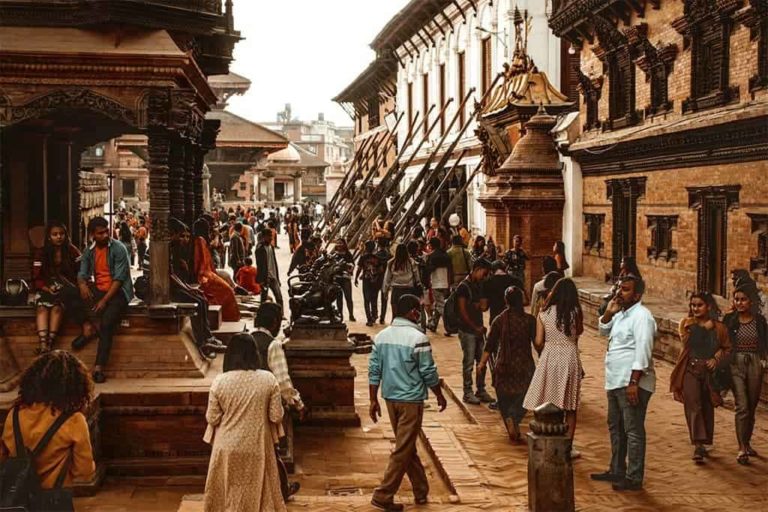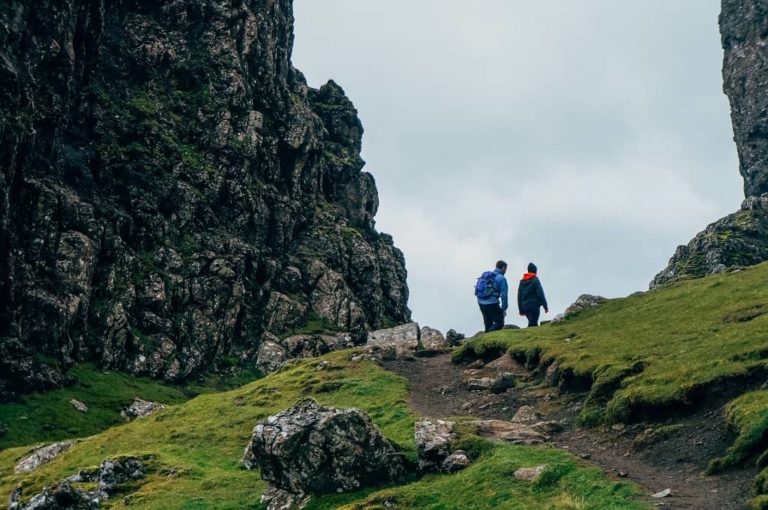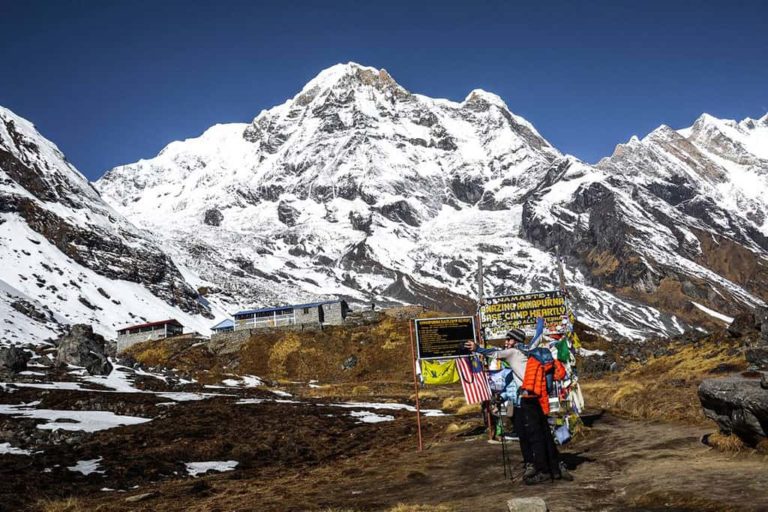Things to Know Before Traveling to Nepal
Nepal is a mesmerizing country that can be traveled solo or in a group. The nation is tamer than its neighboring country, India.
Nepal is surrounded by challenging trekking routes, magnificent glaciers, and picture-perfect valleys that leave every traveler in awe. The country is very welcoming to its visitors and has some of the most friendly locals who will try and help you in whatever way they can.
There indeed are many things to know before traveling to Nepal. Thus, I have curated this article to give first-time travelers the complete idea of things they wish they’d known before traveling to Nepal.
Here is an ultimate guide to everything you need to know before you travel to Nepal:
Seasons
The appropriate season is the first thing to know before traveling to Nepal. It is best to travel to the country according to what you’re planning to do and which season is reasonable to carry out the activities.
Winter Season: December – February
Coldest yet best time for sightseeing as the skies are clear and there is no rainfall. Even though it is warm during the day, it is cold at night. Winter is an excellent time for jungle walks and safari expeditions.
What to Wear?
Fleece jacket, raincoat, windproof jacket, sweaters, woolen gloves, thermal tops and pants, thermal socks, and caps.
Spring Season: March-May
There is no better time to travel to Nepal than the spring as the weather is stable. The days are long and transparent, making them ideal for hiking, trekking, and peak climbing.
Spring is also the best season to explore wildlife in Chitwan and Bardia.
What to Wear?
Cotton and linen clothes, Dri-FIT tops, windproof jackets, thermal tops and pants (just in case), scarves, trousers, sweatpants, and hats.
Summer + Monsoon Season: June – August
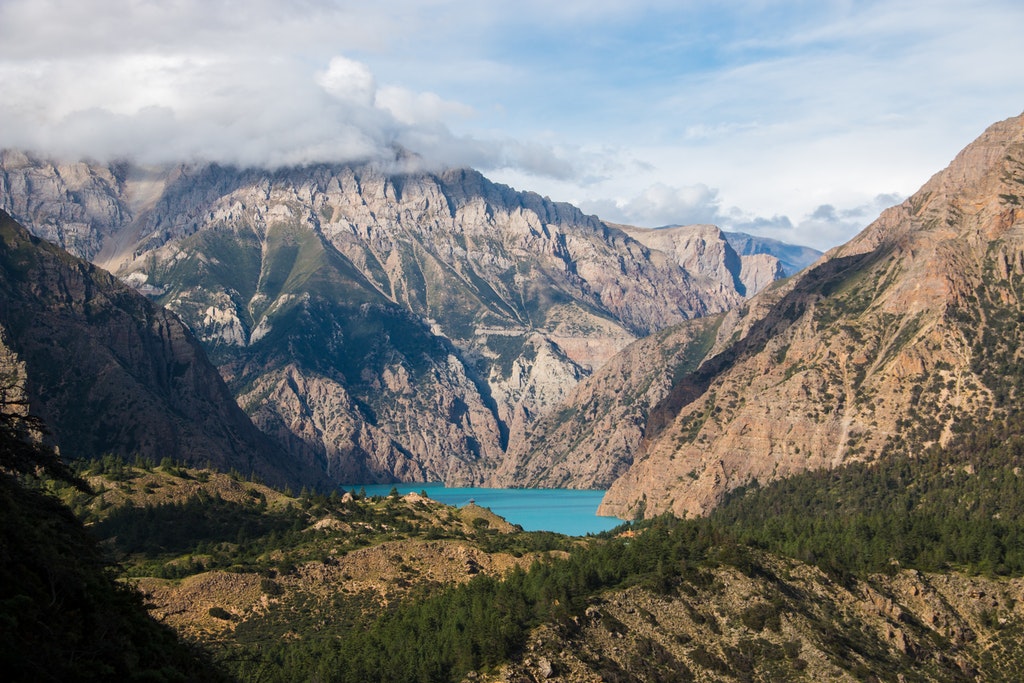
The monsoon downpour makes the trail muddy, slippery, and full of leeches. As a result, there is a risk of landslides, avalanches due to which the highways may be closed, and flight delays/cancellations are more prominent.
Accommodation prices are low this time of the year.
What to Wear?
Cotton and Dri-FIT t-shirts, raincoats, windproof jackets, sandals/flip-flops, loose trousers, flowy skirts (for females).
Autumn Season (High season): September – November
Autumn is the best season as it rewards you with clear skies and fresh air due to monsoon rains.
The walk will be pleasant as you will see breathtaking landscape views. It is also the time for Nepal’s prominent festivals like Dashain and Tihar, so this is a great time to learn about Nepali culture.
What to Wear?
Cardigan, cotton t-shirts, Pashmina shawls, windproof jacket, fleece jackets, trousers, sweatpants, warm socks, hat.
Best season to travel in Nepal
Budget
Budget is the most important thing to know before traveling to Nepal, as you do not want to be broke in the middle of your trek or tour. Therefore, you must plan your trip according to your budget.
Less than $40 per person
- Accommodation in budget hotels and hostels ($5 – $20)
- Dinner/Breakfast in trekking lodges ($10 – $12)
- Trekking Porter / Guide ($13 / $20 per day)
Mid-Range ($40 – $100) per person
- Camping trek: $50 – $80
- Meal: $7 – $10
- Accommodation in hotels: $20 – $80
High Range ($100+) per person
Five-star hotels in Kathmandu? Pokhara:$150 – $250
Meal: $10-$20+
Mountain Flight: $171
Money
Upon arrival, you can easily change your currency in money exchange centers at Tribhuvan International Airport, Kathmandu. In addition, there are plenty of ATMs in Kathmandu, Pokhara, and other cities from where you can withdraw money before commencing the trek.
Visa
Tourist visas are available at the Tribhuwan International Airport upon arrival.
At the Tribhuwan International Airport, a valid passport with six months validity is required, as well as a passport-sized photograph.
There are three types of visas available: a 15-day visa ($30), a 30-day visa ($50), and a 90-day visa ($125). There are electronic visa machines and staff to help you with the form proceedings.
If you want to add your stay in Nepal, you have to go to the Central Immigration Office, fill out the forms, and pay. For example, an extension for 15 days costs $45. You can add your stay in Nepal up to 180 days per year.
You can get a free visa if you are a citizen of China or any other SAARC nation. However, before arriving in Kathmandu, citizens of Nigeria, Ghana, Swaziland, Somalia, Cameron, Iraq, Afghanistan, Palestine, and Liberia will have to obtain one. Therefore, it is best to correspond with your local Nepalese embassy before booking the flight to Kathmandu.
Sim Cards
Ncell and NTC SIM cards are readily available at the airport. You can also get these SIM Cards at Ncell centers and NTC branch offices.
Moving Around
Since Nepal has only one international airport (Tribhuvan International Airport) in the capital city, Kathmandu, you will be visiting this city.
Here are some of the options on transportation that you must know before traveling to Nepal:
Local Buses / Minibuses
These are inexpensive ways to travel around the country as they go pretty much everywhere. In addition, you will only have to pay $1 per hour until you reach your destination.
On the other hand, local buses take a very long time to get to your destination as they wait until the seats are filled, then pick up and drop off passengers along the way.
Also, they stop for lunch. Their loud music plays non-stop for hours, which can be annoying. Nevertheless, it is an experience you will never forget.
Tourist Bus
You can reach your destination much more comfortably and quickly by taking a tourist bus. They are, however, a bit expensive, costing $3 – $4, but undoubtedly quicker.
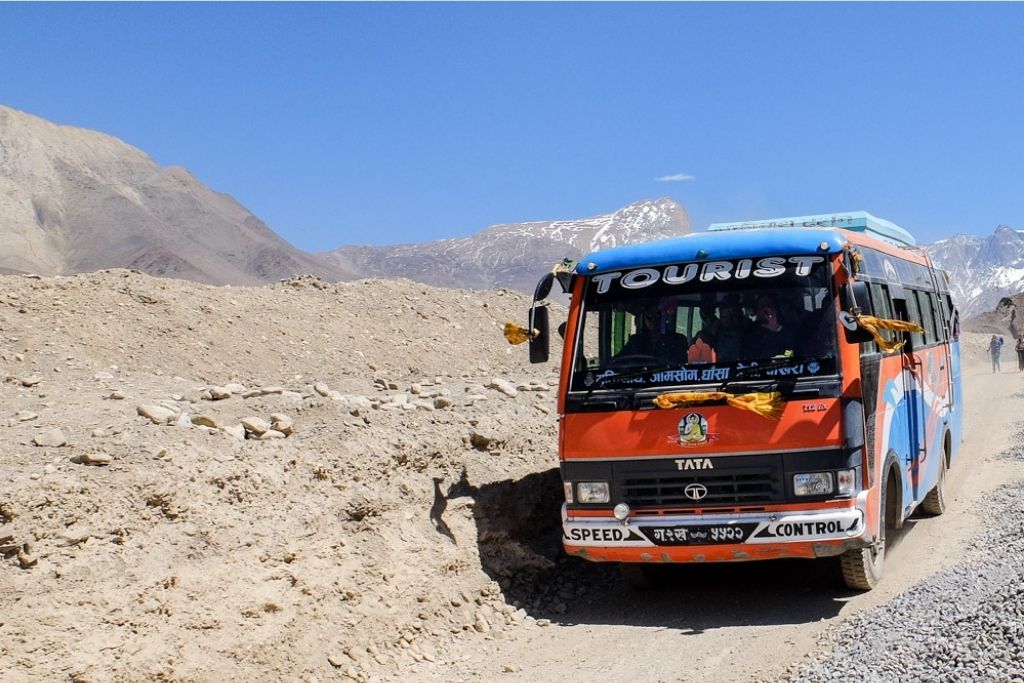
It would be best to get around the country on tourist buses as they are more convenient.
Flight
Flying is the fastest and easiest way to reach your destination. It is, however, quite costly. On the other hand, traveling by flight will give you a glimpse of mountains in the country.
For example, A one-way ticket from Kathmandu to Lukla for Everest Base Camp costs $160. Furthermore, Lukla Airport is listed as one of the world’s most dangerous airports. Wouldn’t it be worth the experience?
Taxis
Taxis are suitable for trips within a city.
Transport facilities around the most visited sites of Nepal
| Destination | Transportation |
| Kathmandu | Public transportation: Local bus, Micro-bus, Tempo (electric rickshaw), rickshaw Hire: bicycle, scooter, bike, car Online services: Tootle, Pathao No train service |
| Pokhara | Taxi, local bus Hire: bicycle, scooter, bike, car Online service: Onver, Rhino ride No train service |
| Lumbini | Public transportation: electric rickshaw, tuk-tuk, rickshaw Hire: bicycle, electric rickshaw No online service No train service |
| Mustang | Hiking Hire: jeep, bike No online service No train service |
| Chitwan | Public transportation: tanga, belgaadi (driven by an ox), tuk-tuk, taxi Hire: cycle, jeep, car No online service No train service |
| Janakpur | Public transportation: bus, cycle, rickshaw, electric rickshaw, tempo. Train service: Janakpur – Siraha No online service |
| Illam | Public transportation: Bus, taxi, tuk-tuk, Train service: Siliguri – Darjeeling (India) Hire: taxi No online service |
| Dharan | Public transportation: bus, temp (electric rickshaw), taxi Hire: taxi, private car No online service No train service |
| Solukhumbu | Public transportation (only till Salleri): bus, jeep, cars On the trails: Yak, Hike Air transport: Helicopter, flight at four airports (Kangeldanda, Lukla, Solu Dushkunda, Syangboche No online service No train service |
| Shuklaphanta National Park | Tourist bus and private cars only |
| Rolpa | No transportation. The roads have deteriorated. |
| Birgunj | Public transportation: bus, electric rickshaw Hire: Jeep Train service: Raxaul – different parts of India No online service |
| Bardiya | Public transportation: bus Hire: Tourist bus, jeep No train service No online service |
| Koshi Tappu Wildlife Reserve | Hire private vehicles like Jeeps, boats, and tourist buses. Public transportation is scarce. No online service No train service |
How to get to Nepal
Plan how you will enter the country before traveling to Nepal. There are two ways to enter the country:
Tribhuvan International Airport (TIA)
After you arrive at TIA, you can get a travel visa at immigration. Then, you can get inside the terminal. However, if you have booked a hotel, few will even pick you up from the airport. Therefore, it is best to confirm with the hotel before booking.
Sunauli (Indian Border)
If you want to travel to Kathmandu or Pokhara, take a direct bus from the Indian border. If you’re going to any other destination, you can take a rickshaw or a jeep to Bhairahawa and take a bus too.
Exchange rates
- Australia: AUD 1=Rs 90.43
- Canada: CAD$1=Rs. 92.56
- China: Y1=Rs. 18.10
- Europe: Euro 1 put symbol=Rs. 140.08
- Japan: Yen 1=Rs 1.08
- India: Rupee 1=Rs 1.61
- UK: Pound Sterling 1=Rs 162.67
- US: US $1=Rs 117.18
Important numbers
- Country Code: +977
- International Access Code: +00
- Police: 100
- Tourist Police: 4247041
- Tourism Hotline: 4225709
- Ambulance: 102
- Fire: 101
Always carry
- Face mask
- Earplugs to avoid noisy local buses, the turbo sound of airplanes, and sometimes hotel rooms.
- Lip Balm and sunscreen while trekking.
- Hiking boots.
- Padlock.
- LED Torch in case of power cuts and for nighttime trips to the washroom.
- Insect repellent
- Waterproof teeshirt and shorts for swimming, rafting, canyoning, rafting, and elephant washing.
- Reusable water bottles and water purification tablets
- Hand Sanitizer
10 Best Trekking Destinations in Nepal
Hence, these are all the things that you need to know before traveling to Nepal. I hope this article was helpful for you.
If you have any queries on traveling to Nepal, feel free to ask us in the comment section below.

